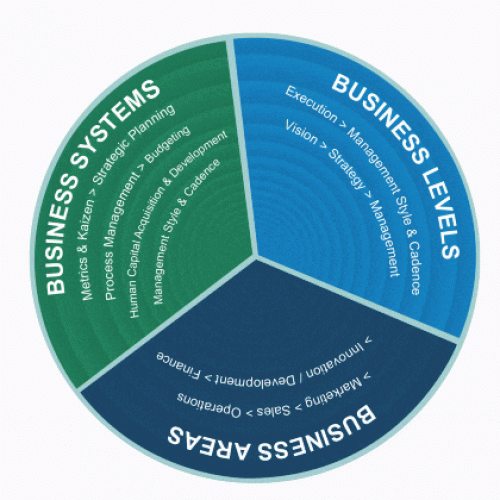Scaling a company is an exciting yet challenging endeavor. As a business grows, it must adapt and transform to meet the evolving needs of its expanding operations. This article explores the four fundamental “gear shifts” a company must make as it progresses through the stages of growth, illustrated in the figure below.
1. Raw Startups: In the early stages, startups are characterized by their need for speed, high-risk tolerance, and hands-on management. Flexibility and agility are paramount. Decision-making is swift, testing is cost-effective, and feedback loops are rapid. With often-negative cash flow, time is of the essence. The primary goal here is to develop a valuable product or service while identifying the right target market.
2. Early Revenue Stage: As a company moves into the early revenue stage, the focus shifts to refining marketing and sales processes. The management team, particularly the CEO, must channel their intellect and critical thinking toward optimizing lead generation and sales. This phase also demands the documentation of internal processes and rapid hiring to support growing customer needs. Sales and customer service teams are introduced at this point.
3. The Established Company: Companies at this stage possess the tools and processes for marketing, selling, and delivering their products or services effectively. Here, the emphasis shifts to fine-tuning these processes and assembling a team capable of achieving high levels of success and retention. This shift can be challenging for entrepreneurs accustomed to micromanagement and decision-making autonomy. It’s also the stage where many business owners struggle to adopt systematic approaches, often resulting in stunted growth.
4. Expansion and Scaling: Scaling, defined here as targeting growth of 50% to 100% annually, requires a significant reorganization. It involves the development of internal talent, improvement of hiring and training systems, and careful financial planning. A robust management team, comprising professionals with ten or more years of experience in their respective areas, becomes crucial. Growing the management team through a combination of external hires and upskilling current employees is essential. Scaling also necessitates the implementation of management systems for goal setting, performance measurement, strategic planning, financial control, process management, optimization, and shaping the company’s culture.
Scaling a company is both science and art. The science involves implementing proven management and leadership practices, while the art comes from experience. Knowledge and intelligence are invaluable, but experience remains unparalleled. Few companies can navigate the treacherous path of scaling without guidance from seasoned individuals who have successfully undertaken this journey before. Scaling is filled with pitfalls not typically addressed in conventional education, making mentorship and expertise crucial for success. As companies shift through these four gears, they must adapt, evolve, and embrace change to continue thriving on their path to growth and scaling.











